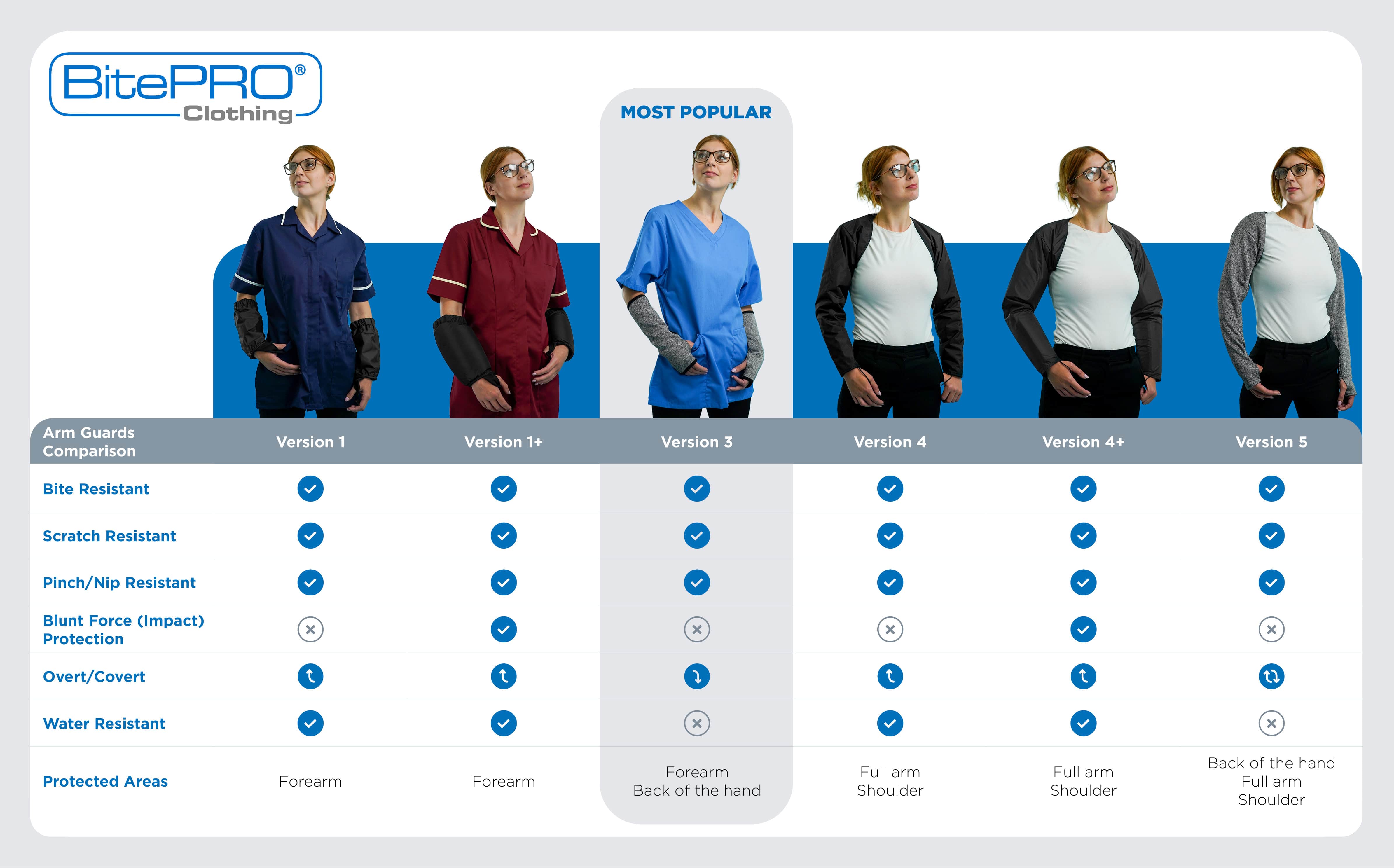This article presents findings from a random international BitePRO® survey, which was administered from Monday 16 November 2020 to Friday 04 December 2020.
One hundred and seventy individuals from nine countries completed the survey, primarily coming from sectors, such as mental health care, special educational needs and nursing. Individuals were invited to participate via different digital marketing and social media platforms.
Take part in this year's Challenging Behaviours Survey
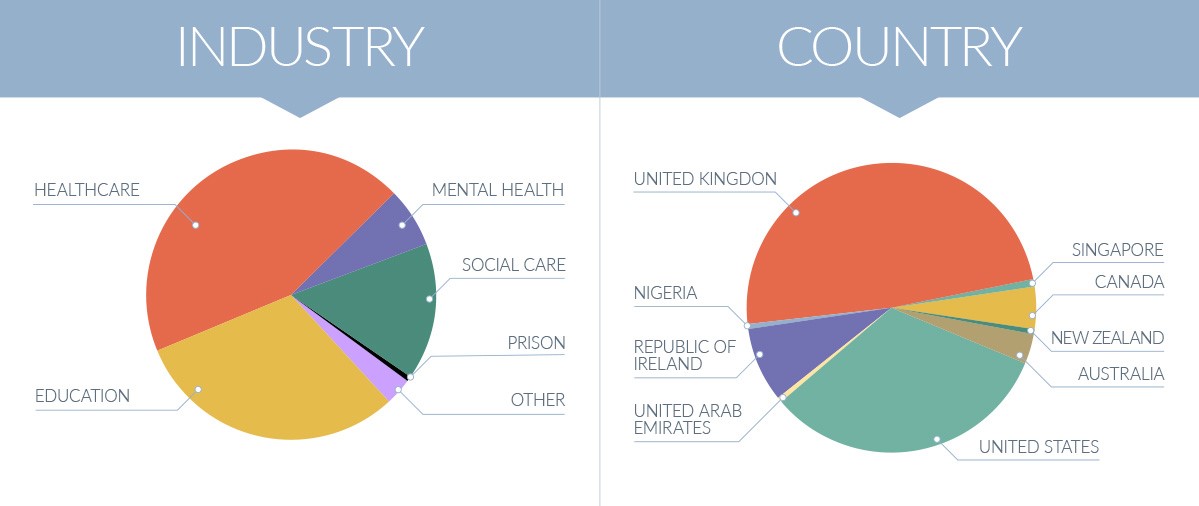 The objective of the study was to quantify customer feedback, social media comments and industry knowledge on the subject of the risk of human bite injuries in the workplace. There is very little information available on the subject and I wanted to learn directly from the people at risk of being bitten, on how they think and feel about the subject.
The objective of the study was to quantify customer feedback, social media comments and industry knowledge on the subject of the risk of human bite injuries in the workplace. There is very little information available on the subject and I wanted to learn directly from the people at risk of being bitten, on how they think and feel about the subject.
On closing the survey on Friday 04 December, I was truly astounded by the findings.
95% of the respondents confirmed that they had experience of dealing with biting, scratching or pinching behaviour in the workplace, and 89% had personally been bitten, scratched, pinched or bruised as part of their role. From that I think we can agree that the respondents know the subject matter and have a valuable viewpoint on the topic.
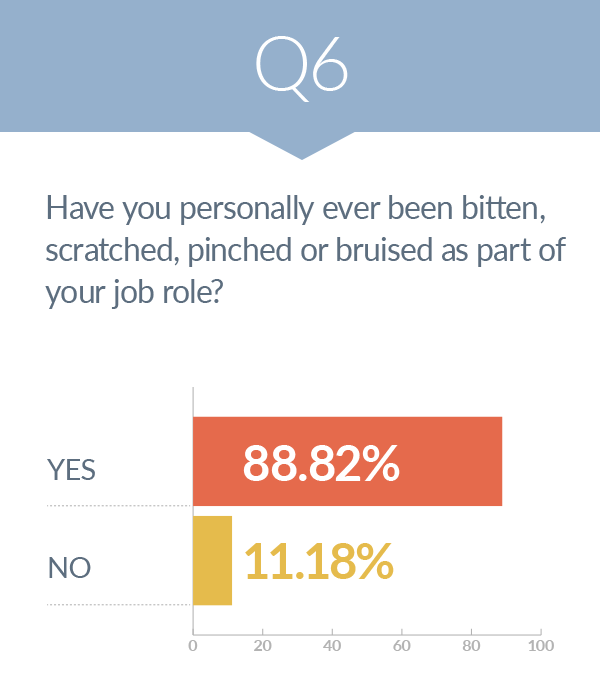
In terms of the findings my biggest learning was the overwhelmingly positive link between the use of bite resistant clothing and a reduction in the need for restraint. Personally I had no idea that restraint (of any type) increased the risk of a bite or injury to a worker and their team (83% agreed).
93% of respondents agreed that reducing the number of crisis or meltdowns that an individual suffers reduces the need for restraint.
62% of those agreed that since wearing bite resistant clothing the number of crisis or meltdowns had been reduced at their site. Therefore using such type of protective clothing can reduce the need for restraint. This is obviously under specific circumstances but I think we can all agree that anything that can reduce the need for restraint is a very positive thing.
There were three specific pieces of information that really shocked me.
The first was that 50% of the people who had completed the survey had needed to seek medical attention as a result of a bite injury sustained in the workplace.
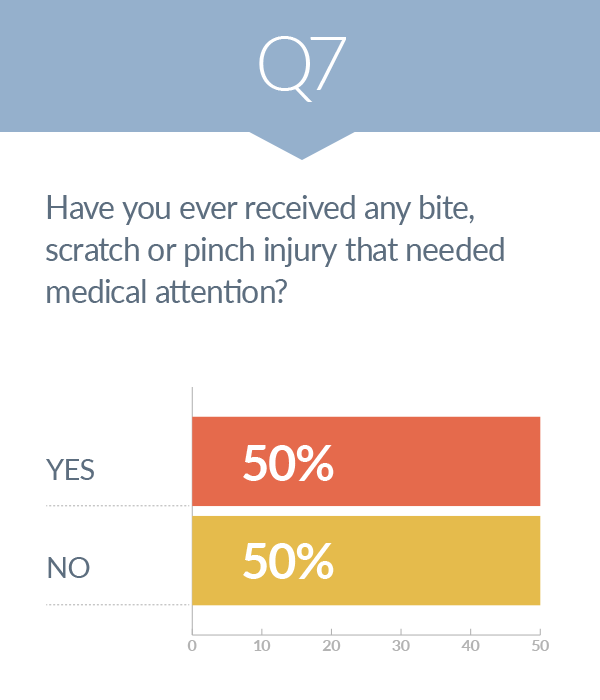
This tells me that professionals who are subject this risk need more support and protection from their employer. No one should go to work and get injured, I completely accept that accidents happen but is enough being done to protect professionals who face this risk? The fact that 76% of respondents said that they have felt psychological stress or distress from this just emphasises that further.
The second point that really shocked me was the use of “make shift” protection. 45% of respondents admitted to using items such as foiled bubble packing, weight lifting gloves, denim or leather jackets, shin pads, towels wrapped around arms and mixed martial arts protective clothing, to name but a few.
In future I plan to explore this further to understand if the employer was aware of the use of these items and if the wearer was aware of the specifically designed protective clothing such at BitePRO® Bite Resistant Clothing.
The third and final point, which rather shocked me was that over 97% of the respondents agreed that the general public do not realise that being bitten at work is a genuine risk to people working in healthcare, mental health and special educational needs settings. This belief is certainly held up by a large amount of comments that we receive through social media where people make jokes about our clothing and why it is needed.
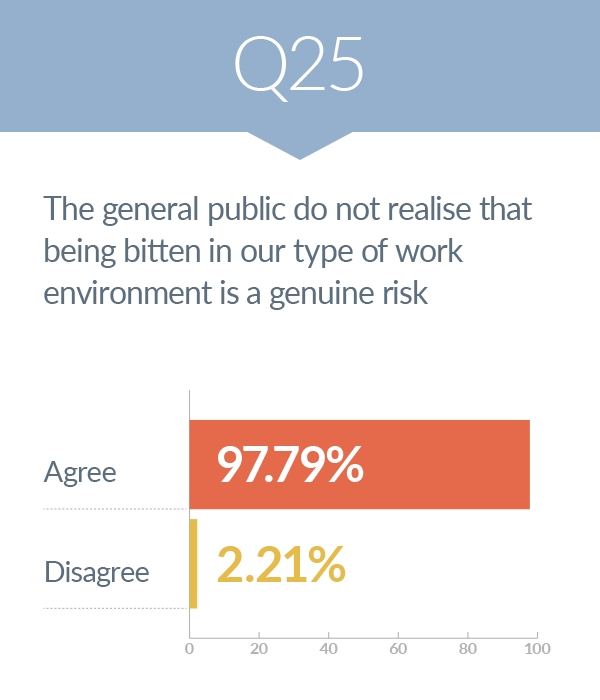
It is a very emotive subject, and one which can be difficult to broach with people and companies who do not always want to talk about staff being injured. Some may even be concerned about potential internal repercussions when talking freely about worries, concern or personal experiences.
On a more positive note there we some very uplifting findings from the survey which include:
91% said that wearing bite resistant clothing gives them more confidence when dealing with challenging behaviour.
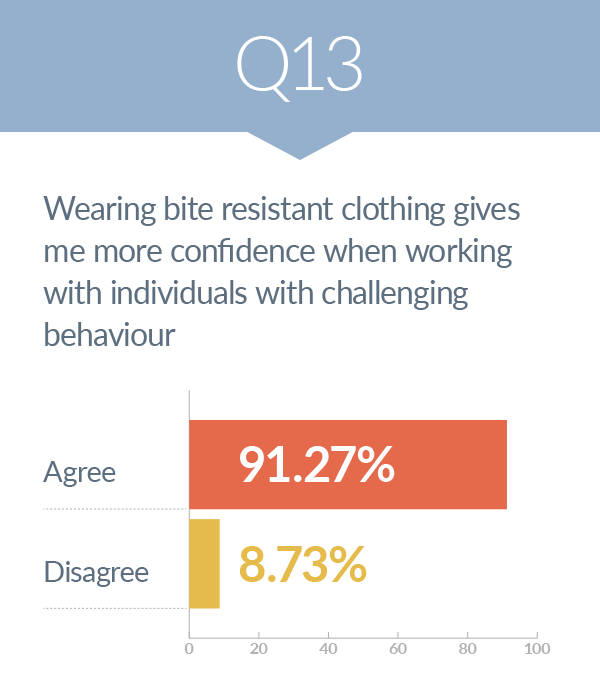
83% of participants confirmed the number of bit injuries had been reduced since wearing bite resistant clothing!
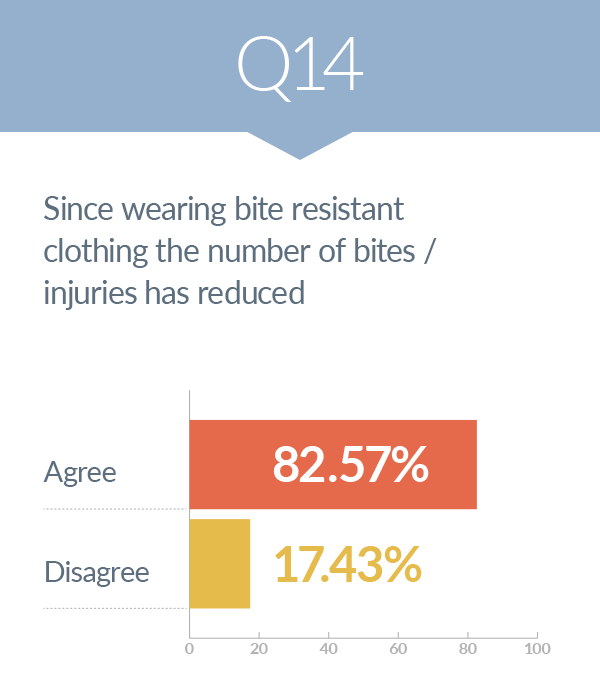
93% agreed that individuals get sensory feedback from the act of biting. Reducing the sensory feedback they receive through the specific act of wearing bite resistant clothing has a huge impact on the subsequent behaviour of some individuals with the incidents of biting being reduced.
92% agreed using bite resistant clothing gives staff members additional confidence going into a situation that they will not be hurt so can get closer, act quicker and take control of a situation before it escalates further.
The survey also concluded that escalation could involve the use of restraint, which 83% agreed increased the risk of a bite injury to them and their team.
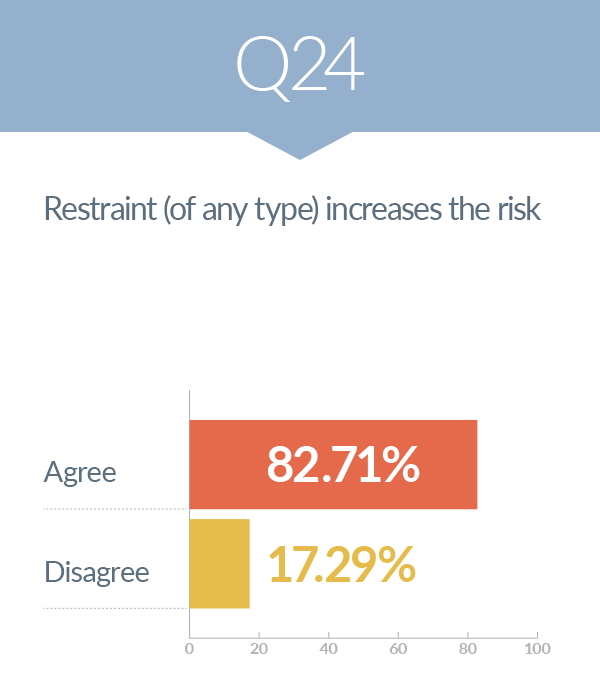
As a result of the survey I did some further research into the restraining aspect in relation to this survey. This is something, I must admit, I had very little awareness of.
I was astounded to discover that the UK Government passed legislation back in 2018 which was supposed to restricting the use of dangerous restraint practices against patients in mental health units. The UK’s newspaper The Guardian reported on 30 November 2020 that the legislation requires psychiatric units to reduce and record the use of restraint against patients and to train their staff to use de-escalation techniques instead to defuse difficult situations.
Given the findings of this survey in relation to people wearing bite resistant clothing being able to de-escalate situations with more confidence it struck a real chord with me as one way to help mental health workers in such difficult situations.
Sadly this is not just a UK problem, there are numerous reports of improper use of retrain in the USA too. A quick search brought me to an article in The City about New York where face-down and prone restraint of children is still legal and common practice. I was utterly shocked to discover that a 16 year old boy died this in may this year as a direct result of a prone restraint. The incident happened at a facility for teenagers with behavioural problems and mental health needs, three people have since been charged.
The common theme in both of these articles is a movement from restraint towards de-escalation techniques which will obviously be a much needed improvement but difficult transition. If bite resistant clothing can help in any small way to way to de-escalate a situation where a teacher, mental health worker, carer or nurse feels at risk of injury when doing their job, that I am proud to be able to support them.
Our arm guards are available in a number of designs, styles and sizes. In order to help you chose the most suitable model we have created a simple ‘Guide to BitePRO® Arm Guards’:
About the Author
If you’ve enjoyed this article, you may be interested in learning more about the work we do at BitePRO®. Robert Kaiser, our company’s Founder & CEO, is a globally respected expert in combating and mitigating violence, as well as risk management. He is also a gender-based violence specialist and the author of NEVER A VICTIM – The Definitive Guide to Women’s Safety, written after three decades of researching violence against women. His recent articles include Women’s Personal Safety: Awareness, Prevention, and Protection — a comprehensive guide filled with practical strategies, expert insights, and trauma-informed advice.



